What to Look for in a Cargo Area – Tips and Tricks
March 7, 2023
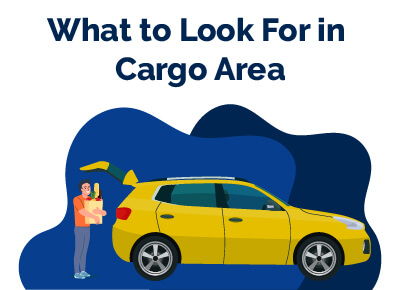

Michael Collado is a car buying expert and has been a professional automotive writer since 2009. He’s written about dealership sales, vehicle reviews and comparisons, and service and maintenance for over 100 national automotive dealerships. Previously, Collado was a copywriter at the ad agency TBWA/Chiat/Day where he worked on brand campaigns for Nissan, ABC Television, Sony PlayStation, and Energizer. His recognition in the ad industry includes awards from Communication Arts and The Clios.
Collado has a Bachelor’s degree from the University of South Florida, with a major in Psychology and a minor in Marketing.
From size and capacity to accessibility and loading ease, there are many aspects worth considering when choosing a vehicle with the right cargo space.
Durability and safety should also be taken into account, as well as any additional features that may provide added convenience or flexibility.
We'll take an in-depth look at each element so you can determine which type of cargo area best suits your needs.
Table of Contents
Size and Capacity
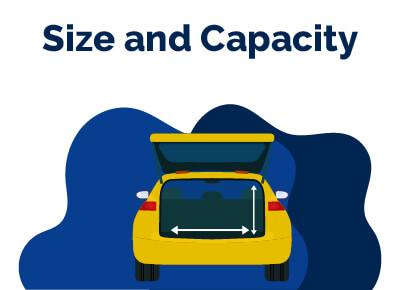 When it comes to size and capacity, the length and width of a cargo area are important factors to consider. If you plan on carrying multiple passengers, make sure your car has enough room for everyone to be comfortable.
When it comes to size and capacity, the length and width of a cargo area are important factors to consider. If you plan on carrying multiple passengers, make sure your car has enough room for everyone to be comfortable.
Volume and payload capacity are also key considerations when shopping for a car with plenty of cargo space. Volume refers to how much stuff can fit inside the vehicle, while payload capacity indicates how much weight it can safely carry without compromising its performance or handling abilities. It's important to take into account both volume and payload so that your car won't be overloaded during long trips or when transporting heavy items like tools or equipment.
Seating capacity should also be taken into consideration when selecting a vehicle with ample cargo room. Most cars have five seats, but some may offer additional seating options such as fold-down rear seats, which provide extra storage space while still allowing passengers to ride comfortably in the back seat area.
Accessibility and Loading Ease
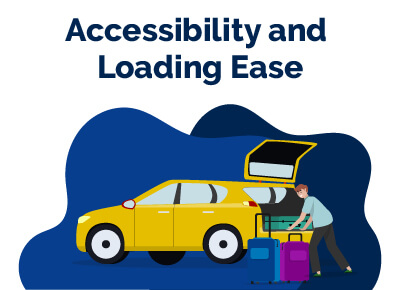 Look for doors and openings that make loading items into the cargo area easy. This could include sliding side doors or rear liftgates with low thresholds so you don't have to struggle to lift heavy items up high.
Look for doors and openings that make loading items into the cargo area easy. This could include sliding side doors or rear liftgates with low thresholds so you don't have to struggle to lift heavy items up high.
Ramps, lifts, or slides can be helpful when transporting heavier items, like furniture or appliances. Some cars come equipped with these features, while others may require aftermarket installation if they are not available from the manufacturer. Be sure to check what options are available before making your purchase decision.
Tie-downs and anchors can help secure items in place during transport, so they don't shift around while driving, which could cause damage to both your cargo and your car itself. Many vehicles offer tie-down points in their trunk areas, but some may require additional anchor points installed if they aren't already present in the design of the car itself.
Finally, look for any other features that might make loading easier, such as lighting options, so you can see what you're doing at night or climate control systems that will keep your cargo at an optimal temperature regardless of outside conditions during transport.
Versatility and Flexibility
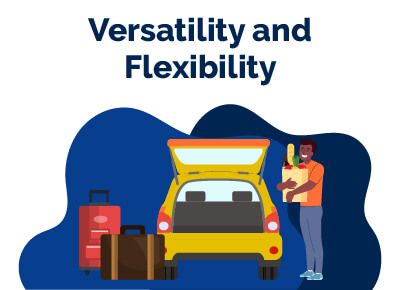 Interior configurations allow you to customize the cargo area of your vehicle to meet your needs. This could include adjustable shelving, dividers, or other options that can be tailored to fit whatever items you need transported.
Interior configurations allow you to customize the cargo area of your vehicle to meet your needs. This could include adjustable shelving, dividers, or other options that can be tailored to fit whatever items you need transported.
Modular storage solutions provide extra storage options such as drawers, bins, and racks that can be added or removed depending on what type of items need transporting. Compartmentalization options help keep items organized during transport by providing compartments with lids or doors that close securely, so nothing falls out while driving.
Overall, versatility and flexibility are important when looking into purchasing a new car, as it allows users to tailor their vehicle’s interior configuration according to their specific needs. Whether it is carrying large bulky objects like furniture pieces or organizing multiple small tools into individual compartments, having these features available makes any journey much smoother than before.
Durability and Safety
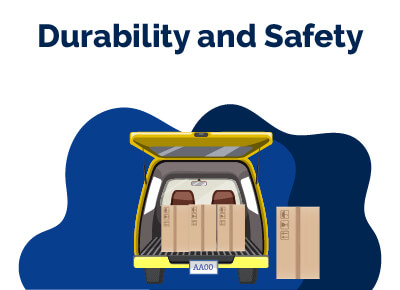 The materials used in construction should be strong enough to withstand wear and tear over time. Steel or aluminum are common choices for automotive frames and body panels, but there are other options available as well. It is also important to check the strength of the structure to ensure it can handle carrying goods safely. Look for features such as reinforced walls or floors that provide extra support when transporting heavy items.
The materials used in construction should be strong enough to withstand wear and tear over time. Steel or aluminum are common choices for automotive frames and body panels, but there are other options available as well. It is also important to check the strength of the structure to ensure it can handle carrying goods safely. Look for features such as reinforced walls or floors that provide extra support when transporting heavy items.
Anti-theft features are another factor to consider when assessing a car’s durability and safety. Many cars come with locks on doors and windows, alarms that sound if someone attempts to break into the vehicle, or even tracking systems that allow you to locate your car if it is stolen.
Durability and safety are important factors to consider when purchasing a car, but there are also other features that can add convenience and comfort.
Additional Features
 Climate Control Systems
Climate Control Systems
These systems help regulate the temperature inside the cargo area and can be especially useful in extreme weather conditions.
For example, if you live in an area with hot summers or cold winters, having a climate control system can make your ride more comfortable and enjoyable. Additionally, these systems are often equipped with air filters that help keep the air clean and free of allergens or pollutants.
Lighting Options
Having adequate lighting options is also essential when buying a car. Many cars come with headlights that provide visibility during night driving as well as interior lights that allow passengers to see what they need while on the road.
Some vehicles even have special lighting features, such as LED strip lights or ambient lighting, that create an inviting atmosphere inside the cabin.
Best Car Deals by Category
Frequently Asked Questions
What defines a cargo room?
A cargo room is a space in a vehicle that is designed for carrying items. It can be located in the trunk, under the seats, or even behind them. They come in various sizes depending on the make and model of the car. Some cars also feature adjustable dividers so you can customize your cargo room's layout according to your needs.
How is cargo area measured?
Cargo area is typically measured in cubic feet, and can be calculated by multiplying the length, width, and height of the cargo space. This measurement gives an accurate representation of how much storage capacity a vehicle has.
What do dimensions of cargo area mean?
The dimensions of a cargo area refer to the size and shape of the space available for storage in a vehicle. This includes measurements such as length, width, and height.
Posted in Car Buying Tips |




